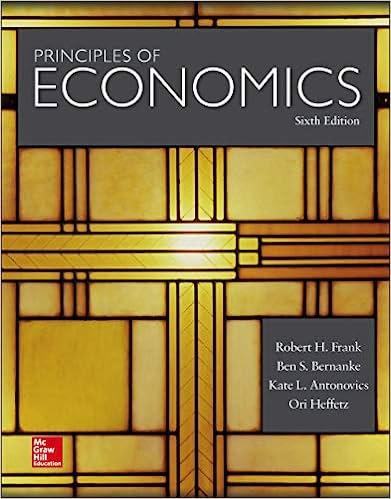Question
Luis is a fan of loud music that he plays on his stereo system. His utility function is defined by equation: U(q, y) = 10q
Luis is a fan of loud music that he plays on his stereo system. His utility function is defined by equation: U(q, y) = 10q 1/2 q^2 + y
Where q is the number of hours of music he plays, and y is his consumption of all other goods. Each hour of music he plays costs him $2 in electricity, but his income is large enough that he could always afford to play music up to 10 hours a day if he so wished.
(a) Determine how many hours of music Luis plays.
(b) Luis has a roommate, Maria, who has the same utility function as Luis. She doesn't have a stereo system, nor does she pay the electricity bill, but she listens to the music. How many hours of music maximizes social surplus?
(c) What (Pigouvian) tax/subsidy enables this allocation to be attained?
(d) Maria moves out, and Gordon moves in with Luis. Gordon's utility function is defined by the equation: U(q, y) = -2q 1/2 q^2 + y
Now which allocation maximizes total surplus, and what (Pigouvian) tax/subsidy enables this allocation to be attained?
(e) Define the Coase Theorem, and explain how it might apply to this particular problem. Specifically, do you think that Luis and Maria might be able to reach a private market solution to this problem? What about Gordon and Luis? Explain your answer.
Step by Step Solution
There are 3 Steps involved in it
Step: 1

Get Instant Access to Expert-Tailored Solutions
See step-by-step solutions with expert insights and AI powered tools for academic success
Step: 2

Step: 3

Ace Your Homework with AI
Get the answers you need in no time with our AI-driven, step-by-step assistance
Get Started


